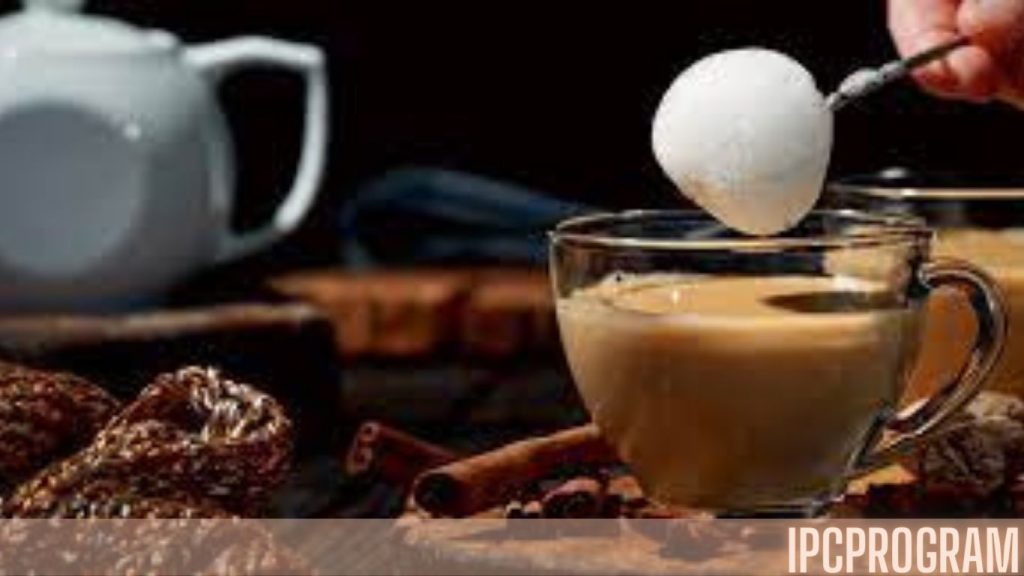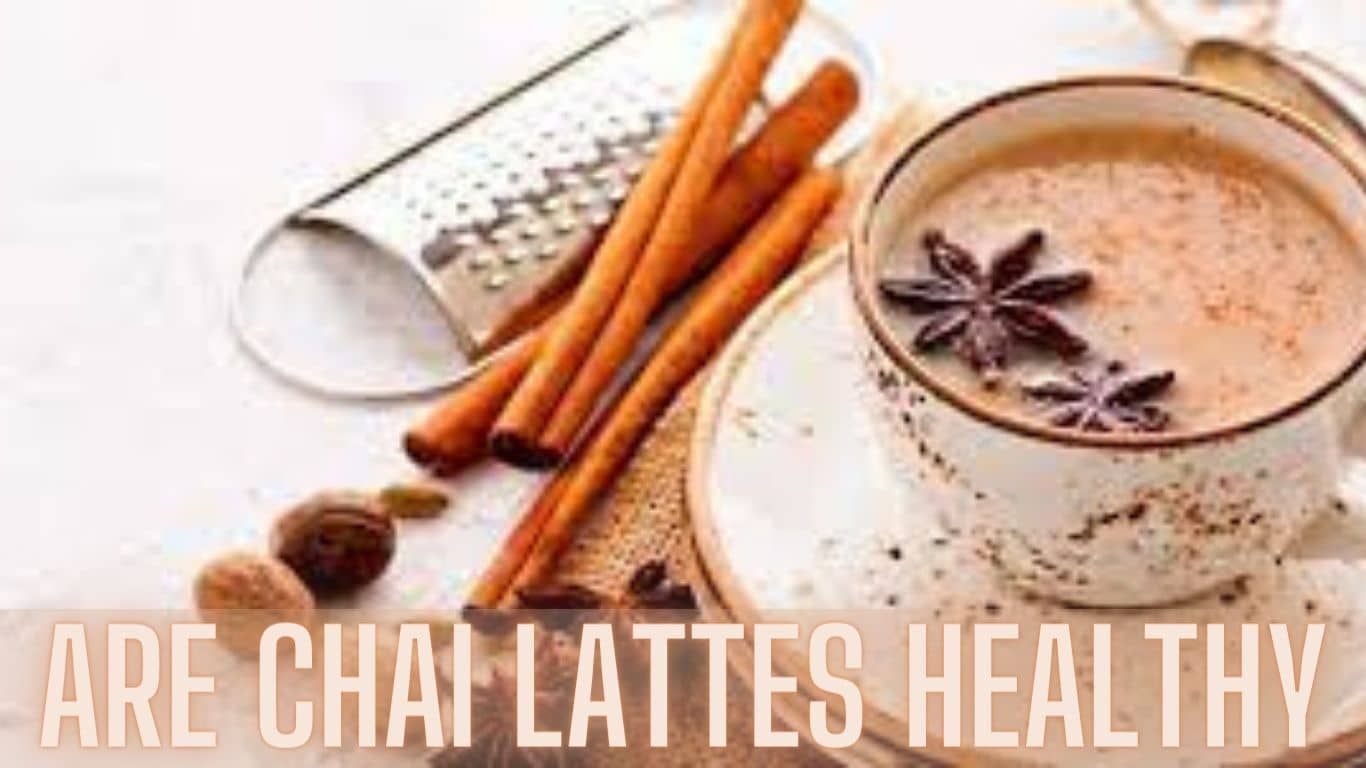Chai lattes have become a beloved beverage choice for many, with their rich and aromatic flavors captivating taste buds around the world.
But behind the comforting blend of spices and creamy texture lies a question that often lingers in the minds of health-conscious individuals: are chai lattes healthy?
In this blog post, we will dive into the nutritional content of chai lattes, exploring both their potential health benefits and hidden health traps.
So grab your favorite mug and join us as we unravel the truth about chai lattes’ impact on our well-being!
Chai Lattes: Are They a Healthy Beverage Option or a Hidden Health Trap?

Chai lattes have gained immense popularity in recent years, becoming a go-to beverage for many.
But before we can make an informed decision about whether they are a healthy choice or a hidden health trap, it’s crucial to understand their nutritional content.
Traditional chai lattes typically consist of black tea infused with a blend of aromatic spices like cinnamon, cardamom, ginger, and cloves.
These spices are known for their potential health benefits, such as antioxidant properties and anti-inflammatory effects.
However, it’s important to note that the overall healthiness of a chai latte depends on how it is prepared.
Many store-bought versions contain added sugars and syrups which can significantly increase the calorie content without providing any nutritional value.
If you have specific dietary restrictions or concerns such as lactose intolerance or high blood sugar levels, it might be wise to consult with a healthcare professional who can provide personalized advice on incorporating chai lattes into your diet safely.
Decoding Chai Lattes’ Nutritional Content: Understanding the Health Implications
When it comes to chai lattes, many people are drawn to their comforting and aromatic flavors.
But have you ever stopped to consider the nutritional content of this popular beverage?
Understanding what goes into a chai latte can help you make more informed choices about your health.
Let’s start with the base ingredient – tea. Traditional chai lattes are made with black tea, which contains antioxidants that offer potential health benefits.
However, it’s important to note that some commercial versions may use lower-quality teas or add excessive amounts of sugar.
Speaking of sugar, it plays a significant role in the overall nutritional profile of a chai latte.
Many pre-packaged or coffee shop varieties are laden with added sugars, which can contribute to weight gain and other health issues when consumed in excess.
Furthermore, the milk used in chai lattes also affects its nutrition content. Full-fat dairy options can increase saturated fat intake while plant-based alternatives like almond or oat milk provide fewer calories and less fat.
Additionally, spices such as cinnamon, cardamom, ginger, and cloves give chai lattes their distinctive flavor profile.
These spices not only enhance taste but also bring potential health benefits like anti-inflammatory properties and improved digestion.
Navigating Chai Lattes for Health-Conscious Consumers: Tips and Considerations

When it comes to enjoying a warm cup of chai latte, health-conscious consumers may find themselves wondering how to make the best choices.
While chai lattes can be a comforting and indulgent treat, they can also pack quite a punch in terms of calories and sugar content.
But fear not! With a few simple tips and considerations, you can still savor your favorite drink while making healthier choices.
Opt for unsweetened or lightly sweetened versions of chai lattes whenever possible.
Many coffee shops offer the option to customize your drink by choosing alternative milk options like almond or oat milk, which are lower in calories compared to whole milk.
Watch out for added syrups or flavored powders that can significantly increase the sugar content of your beverage.
Instead, try adding natural spices such as cinnamon or nutmeg to enhance the flavor without any extra sweetness.
Consider making your own chai latte at home using quality ingredients.
This way you have full control over what goes into your drink – from choosing organic tea leaves to adjusting the sweetness level according to your taste preferences.
The Pros and Cons of Chai Lattes: Weighing the Health Benefits and Risks

Chai lattes have gained immense popularity in recent years, with their aromatic spices and creamy texture providing a comforting and indulgent beverage experience.
However, when it comes to their health implications, there are both pros and cons that need to be considered.
On the positive side, chai lattes contain a variety of spices such as cinnamon, ginger, cardamom, and cloves.
These spices not only add a delicious flavor profile but also offer potential health benefits.
For example, cinnamon has been linked to improved blood sugar control while ginger may help alleviate digestive issues.
Additionally, chai lattes often include black tea as a base ingredient. Black tea contains antioxidants called flavonoids which have been associated with numerous health benefits including reduced risk of heart disease and improved cognitive function.
Moreover, some individuals may be sensitive or allergic to certain ingredients commonly found in chai lattes such as milk or specific spices like clove or cardamom.
It is crucial for those with dietary restrictions or allergies to carefully read labels before consuming these beverages.
Healthier Chai Latte Choices: How to Make Your Favorite Drink More Nutritious
If you’re a chai latte enthusiast but also want to make healthier choices, there are plenty of ways to enjoy this delicious beverage while still nourishing your body.
Here are some tips on how to make your favorite chai latte more nutritious:
1. Opt for unsweetened milk alternatives: Many coffee shops offer a variety of milk options for your chai latte, including almond, soy, or oat milk. Choose unsweetened versions to avoid added sugars.
2. Use natural sweeteners: If you prefer a sweeter chai latte, try using natural sweeteners like honey or maple syrup instead of refined sugar. These options provide flavor without the negative health effects.
3. Add spices for extra benefits: Chai lattes already contain spices like cinnamon and ginger, but you can enhance their nutritional value by adding extras such as turmeric or cardamom. These spices have antioxidants and anti-inflammatory properties.
4. Control portion size: It’s easy to indulge in oversized chai lattes that come with whipped cream and syrups galore. Be mindful of portion sizes and opt for smaller servings or ask for less added sweetness.
5. DIY at home: Making your own chai latte allows you complete control over the ingredients used. Experiment with different tea blends, adjust sweetness levels and choose high-quality ingredients.
By making these simple adjustments, you can enjoy a healthier version of your beloved chai latte without sacrificing flavor or satisfaction! So go ahead and savor every sip knowing that you’re nourishing your body with each indulgence!
Conclusion:
After analyzing the nutritional content and health implications of chai lattes, it’s safe to say that they can be a healthy beverage option if consumed in moderation and with certain considerations.
While chai lattes offer numerous potential health benefits such as improved digestion, increased antioxidant intake, and reduced inflammation, they also come with some risks.
It’s important to be mindful of the ingredients used in chai lattes, as some commercially available options may contain excessive amounts of sugar or artificial additives.
Opting for homemade versions or choosing cafes that use natural sweeteners like honey or maple syrup can help make your chai latte healthier.
While chai lattes can be a delightful treat packed with flavor and potential health perks when enjoyed responsibly, it’s crucial to consider the quality of ingredients and portion sizes.
By making informed choices and being mindful of overall dietary balance, you can enjoy this popular beverage without compromising your well-being.
So go ahead – savor your next cup of deliciously spiced goodness!




